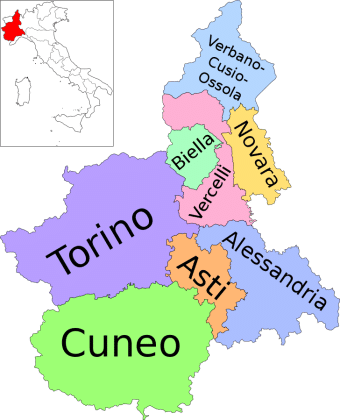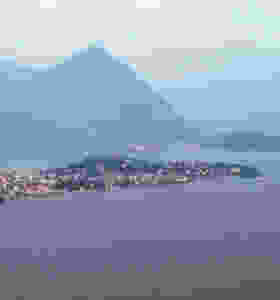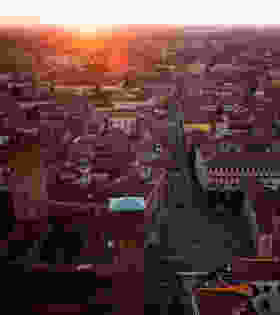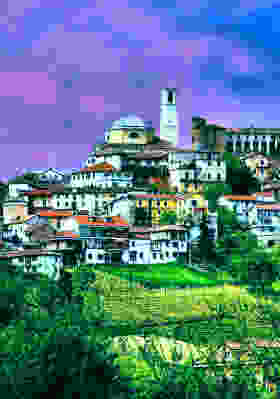Overview

The larger Novara metropolitan area comprises 87 towns (comuni) and covers an area of 134.028 km2.
The population density is 275 inhabitants per km2, making it somewhat densely populated.
The male to female ratio is 1.00:1.06.
Novara is the capital city of the province of Novara in the Piedmont region of northwest Italy.
It had 104,000 residents in 2019, and is the second most populous city in Piedmont after Turin.
Search for:
Climate
The province of Novara receives on average 225 hours of sunshine per month, or 7.5 hours of sunshine per day.NaN This is 4.66% less than the average for Italy and 1.35% more than the average for the region of Piedmont.Throughout the year, it rains on average 7.6 days per month, which is an ordinary amount of precipitation for an Italian province.
During the autumn and winter season, there are usually 11.93 days per month with fog and 4.96 cold days per month with perceived temperatures below 3°C.
In the summer, there are on average 19.19 hot days per month with perceived temperatures above 30°C.
Weather Now
name Region.NameCost of Living
The average monthly income in Novara is around 2001.28€, which is higher than the average for Italy.The estimated cost of living is around 1864.79€ per month for an individual or 2811.45€ per month for a family of 4.
The cost for renting a small apartment (2-3 bedrooms) in a main city area is around 782.86€ per month.
Overall, Novara is expensive compared to other Italian provinces.
Living in Novara is around 13.01% more expensive than the average of all Italian provinces.
Quality of Life
Healthcare
Healthcare in Novara is below average. For every 10k inhabitants, there are around undefined pharmacies, 7.92 general practitioners and 29.9 specialized doctors per 10k inhabitants.NaNAverage life expectancy in Novara is 81.5 years of age.
Education
Novara has a higher-than-average percentage of high school graduates, around 64%; and a lower-than-average percentage of university graduates, around 26.3%.NaN The average number of completed years of schooling for people over 25 is 10.78, which is not far from the national average of 10.44.NaN There is one university in the province.
Leisure
Novara offers a lively and diverse nightlife scene that caters to locals and visitors alike.The city features a range of bars, clubs, and entertainment venues where people can enjoy live music, dance, and socialize.
From trendy cocktail bars to energetic nightclubs, Novara provides a variety of options for a fun night out.
The city's vibrant atmosphere and welcoming locals contribute to a memorable nightlife experience.
Overall, Novara has somewhat decent nightlife with 2.54 bars and 3.21 restaurants per 10k inhabitants.
Crime and Safety
The province of Novara is overall very safe for expats.As of 2021, there are an average of 2944.5 reported crimes per 100k inhabitants.
This is 3.83% higher than the national average.
There have been around 0.6 deadly road accidents and 5.5 serious work-related injuries per 10k people in Novara.
This is respectively 11.11% more driving accidents than average and 57.36% less work accidents than average.
Car theft is reportedly 61.86% lower than average with only 26.9 cases per 100k inhabitants.
NaNReports of house thefts are 12.40% higher than average with 196.72 cases per 100k inhabitants.
NaNCases of robbery are not totally uncommon, around 15.36% higher than average with 25.54 reports per 100k inhabitants.
Novara has a moderate crime rate. Common types of crimes in Novara include theft and property-related offenses.
Visitors should exercise caution and be aware of their surroundings, particularly in crowded areas.
It is advisable to secure personal belongings and take necessary precautions to ensure personal safety while in Novara.
Transport
Public transport in Novara is lacking, and traffic is below average.NaNThere are on average 0.62 active vehicles per person, against a national average of 0.66.
Around 0.49km per 10k inhabitants of the main city in Novara consist of bicycle lanes.
This makes Novara not very bike-friendly.
The historic centre of the city has an almost pentagonal shape and is mostly surrounded by "bastions", tree-lined avenues that have taken the place of the ancient walls that surrounded the city.
Discover
Recommended Tours in Piemonte
Provinces Nearby



